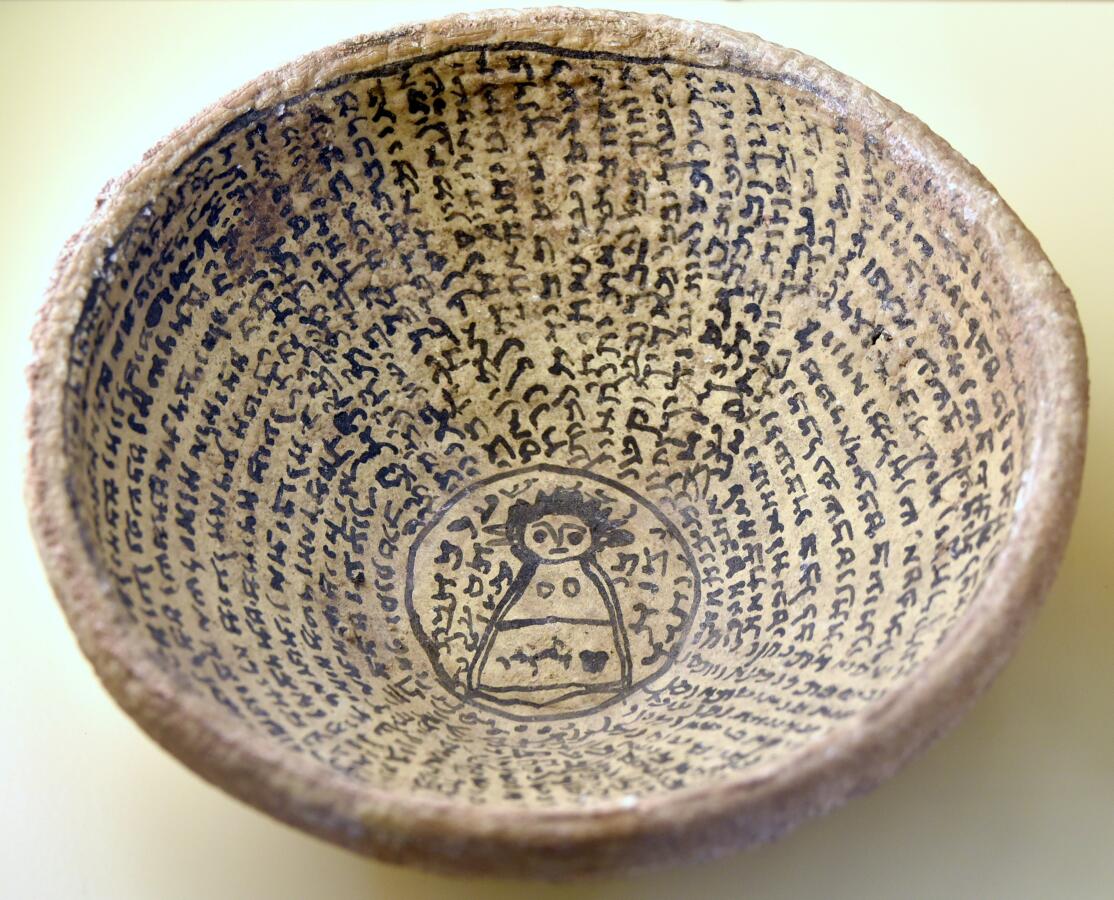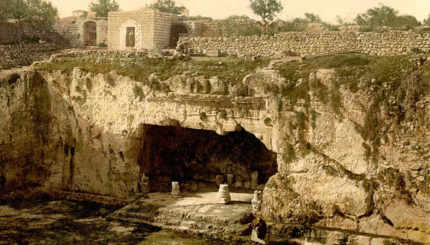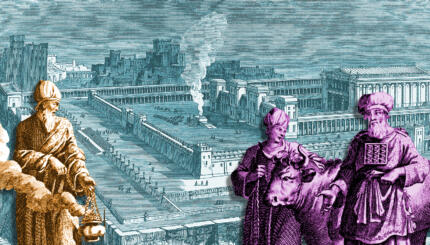The portrays Jews in late antiquity as accepting and participating in the culture of magic and miracles of their age. The use of magical powers was seen as normal, and it was sanctioned so long as the person involved stood within the rabbinic community and used magic for purposes accepted within rabbinic religion. This implication of the literary sources is strengthened by archaeological evidence that reveals the extent to which the Jews of the talmudic period, like the non-Jews of the cultures in which they lived, accepted and indeed depended upon the efficacy of magical spells for personal protection from demons and other ills.
This dependence is shown by a form of magical talisman found frequently in homes of the talmudic period. The term “magic bowl” refers to a pottery bowl on which was written a magical formula used to drive away evil spirits or to invoke a deity’s help in preserving and protecting individuals or a family.
Who Used These Bowls?
During the talmudic period, in roughly 300-600 C.E., such bowls were in common use in Babylonia by Christians, Mazdeans, Mandeans, and Jews. While bowls in use in Jewish homes often were prepared by Jews who were not involved with or representative of the rabbinical academies, certain rabbinical figures also were deemed potent agents the citation of whose names could drive away particular demons.
The names of these rabbis accordingly appear frequently on magic bowls and are invoked in spells written to protect an individual or property from demons. In this way, the Talmud’s own image of the rabbi as a wonder-working holy man entered into and was utilized within the popular culture of the day.
The formulas used on magic bowls and the deities invoked are common across religious traditions. The bowls apparently were prepared by professionals, for instance, by Jews for both Jewish and non-Jewish use. A particular practitioner would be hired to produce a bowl not because of his religious or cultural origins but because of his reputation for success.
This means that only certain references found on the extant bowls, but not features of design or the overall formulas used, signify the religious context in which the bowl was prepared. Mention of the rabbi Joshua ben Perahia, for instance, suggests a Jewish origin, while reference to Jesus the Messiah clearly suggests a Christian context.
For the most part, however, even references to specific holy men or the use of particular incantations are uniform across the religions. Identification of the bowls as Jewish, Christian, or Mandean, accordingly, usually depends primarily upon the script in which the incantation was prepared: Aramaic letters are Jewish, Syriac script indicates a Christian source, and Mandean lettering suggests a Mandean origin.
Incantations & Demons
The majority of extant magic bowls were found during excavations in Nippur in 1888-1889.They were found upside down in the ruins of houses, with one or more bowl found in almost every house as well as in cemeteries, where they apparently served to lay ghosts at rest.
The bowls were used by individuals and families seeking protection for houses and property, e.g., cattle, often with a particular concern for domestic sexual life and unborn babies. Frequent targets of the bowls are Lilis and Liliths, which personify sexual abnormality, prey upon women and children, and were understood to produce offspring with human beings.
The chief element of the bowls is an incantation composed of repeating phrases, words, or syllables believed to have the power to bind favorable powers, on the one side,or demons, on the other, to some designated action. Angels, in Jewish bowls,and deities, on pagan ones, frequently are adduced, and there appears to have been an attempt to use as many names as possible, to harness, as it were, as many forces as were available against as many demons as might be active.
The spell’s main power, however, derived from terminology declaring that the demon has been rendered unable to exercise its control, for instance, that it is “bound, sealed, countersealed, exorcised, hobbled, and silenced.” The separation of a Lilith from her victim often is expressed in terms of a writ of divorce.
Recognizing Powerful Forces
The incantations generally begin with an invocation, followed by the name of the client or clients, the categories of demons to be purged, the names of the angels or deities in which the spells are pronounced, and a conclusion. Jewish texts frequently refer to the angels Michael, Gabriel, and Raphael. The name Yahweh also occurs often broken down into individual, repeated letters or syllables.
The evidence of these magic bowls suggests the extent which Jews, like other people of late antiquity, took for granted the existence of special powers in the universe, deriving from deities or demons, from gods or from the God. These powers could be controlled and used to the benefit of those with special knowledge and/or piety.
The rabbinic literature, of course, distinguished the actions of Jews–rabbis and lay people alike–from those of non-Jews. What the former did, performed in the name of God, was accepted as right and good. It stood in contradistinction to the same acts performed by non-Jews, whose “sorcery” was seen as vile and dangerous.
Inthe magic bowls we see the way in which, in the common culture of the people, even these distinctions were blurred. The Jewish community shared in the broader attitude of its day, accepting the existence of demons and depending upon people’s ability, through incantations and spells, to protect themselves and their property.
Reprinted with permission of The Continuum International Publishing Group from The Encyclopedia of Judaism, edited by Jacob Neusner, Alan Avery-Peck, and William Scott Green.

Help us keep Jewish knowledge accessible to millions of people around the world.
Your donation to My Jewish Learning fuels endless journeys of Jewish discovery. With your help, My Jewish Learning can continue to provide nonstop opportunities for learning, connection and growth.



